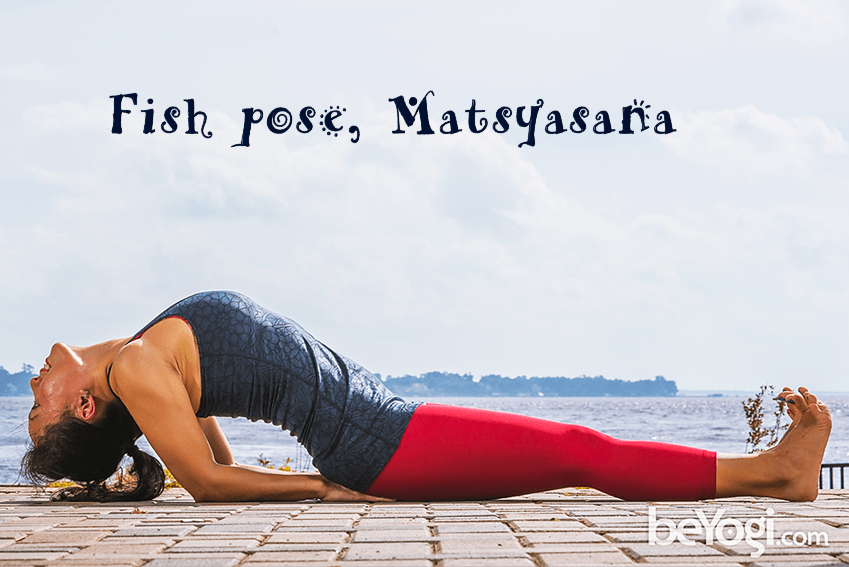
Fish pose, Matsyasana
In Hindu mythology Matsya or fish is incarnation of Lord Vishnu. Matsyavatara is the name for this incarnation and the belief is that all yogis and saints were protected and carried to safe place by the Lord in fish pose.
Thus the wisdom and knowledge were saved for the benefits of everyone on the planet. In Yoga, the benefit of doing Matsyasana or fish pose is: proper blood circulation to brain, helps in focusing. When we feel we are out of balance fish pose helps us to be focused and get back to normalcy in life.
It also has positive benefits on four chakras situated in lower and upper abdomen, above heart and throat region. Balancing chakra means balancing mind and body.
.
With these, other benefits include reducing thyroid problem, back pain, stretching abdominal and thigh muscles – www.healthylife.werindia.com
LEVEL : Intermediate
Anatomy : Abs, Chest, Hips, Neck, Throat
Pose Type: Backbend, Heart Opener, Supine
Sanskrit: Matsyasana (mot-see-AHS-anna), matsya = fish
BENEFITS
- Stretches the chest and the front of the throat
- Opens the pectorals, hip flexors, and intercostal muscles between the ribs
- Stimulates organs in the throat and abdomen
- Strengthens the upper back and neck musculature
- Opens the accessory muscles of breathing
- Releases tension in the thoracic spine and mid-back
CONTRAINDICATIONS
- Insomnia
- Migraine or headache
- High or low blood pressure
- Neck or low back injury
- Glaucoma
HOW TO
- Lie flat on your back with your feet together and legs extended in front of you. Rest your arms alongside your body.
- Press your elbows and forearms into the ground, and begin to lift your chest, creating an arch in the upper back. Draw your shoulder blades together and lift your upper torso off the ground.
- Tilt your head back and continue lifting your chest until you can bring the top of your head to the floor. Keep pressing through your arms. There should be very little weight resting on your head.
- Keep your thighs engaged and press through your heels to lengthen the legs. Continue to deepen the arch in your thoracic spine and breathe.
- Hold this pose for 15 to 30 seconds.
- To release, inhale and lift your head off the floor. As you exhale, lower your head and torso to the ground. Bring your knees into your chest for a counter stretch.
MODIFY OR REPLACE
Alternatives:
Modifications:
- Lay with a bolster underneath the shoulders and allow the head to drop back. This opens the chest and relieves pressure on the back of the neck and head.
SEQUENCING TIPS
Before:
- Salamba Sarvangasana (Shoulderstand)
- Setu Bandha Sarvangasana (Bridge pose)
- Bhujangasana (Cobra pose)
- Urdhva Mukha Svanasana (Upward-Facing Dog)
After:
- Ustrasana (Camel pose)
- Virasana (Hero pose)
- Savasana (Corpse pose)
TEACHING CUES
- Make sure to support your weight on your elbows and forearms, not the top of your head.
- Really arch the upper back and open your heart.
- Reach out through your heels and point the toes to lengthen your legs.
VARIATIONS
- Lift your arms overhead and join the palms together. Then reach back and touch the floor behind you.
- Begin in Padmasana (Lotus pose) and recline down to the ground. Then follow steps 2-7, keeping the legs crossed.
WATCH OUT FOR
- Too much pressure on the head
- Hyper-extending the neck or throat
This article and image published here with prior permission from beyogi.com
Author: HealthyLife | Posted on: October 18, 2017






















Write a comment